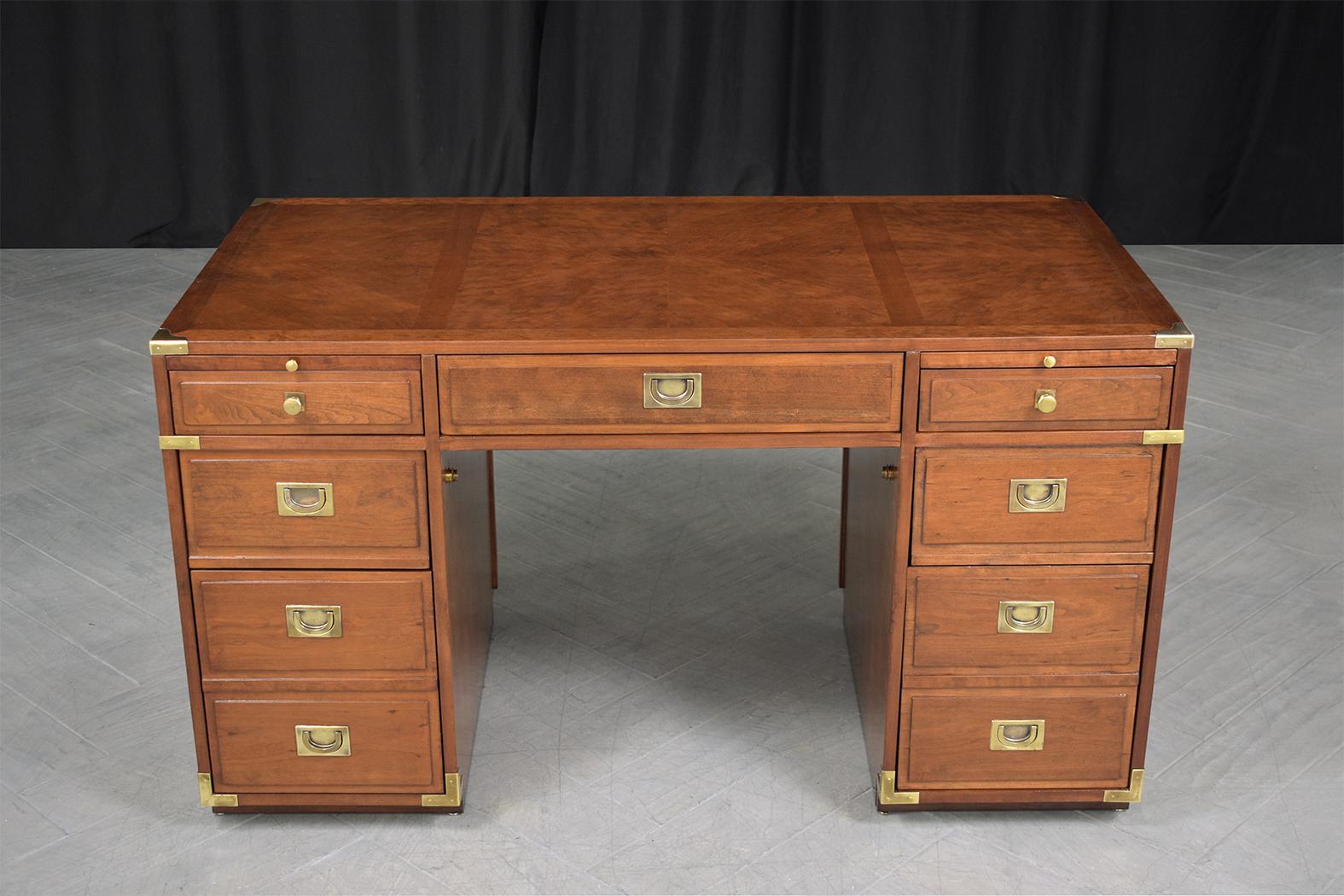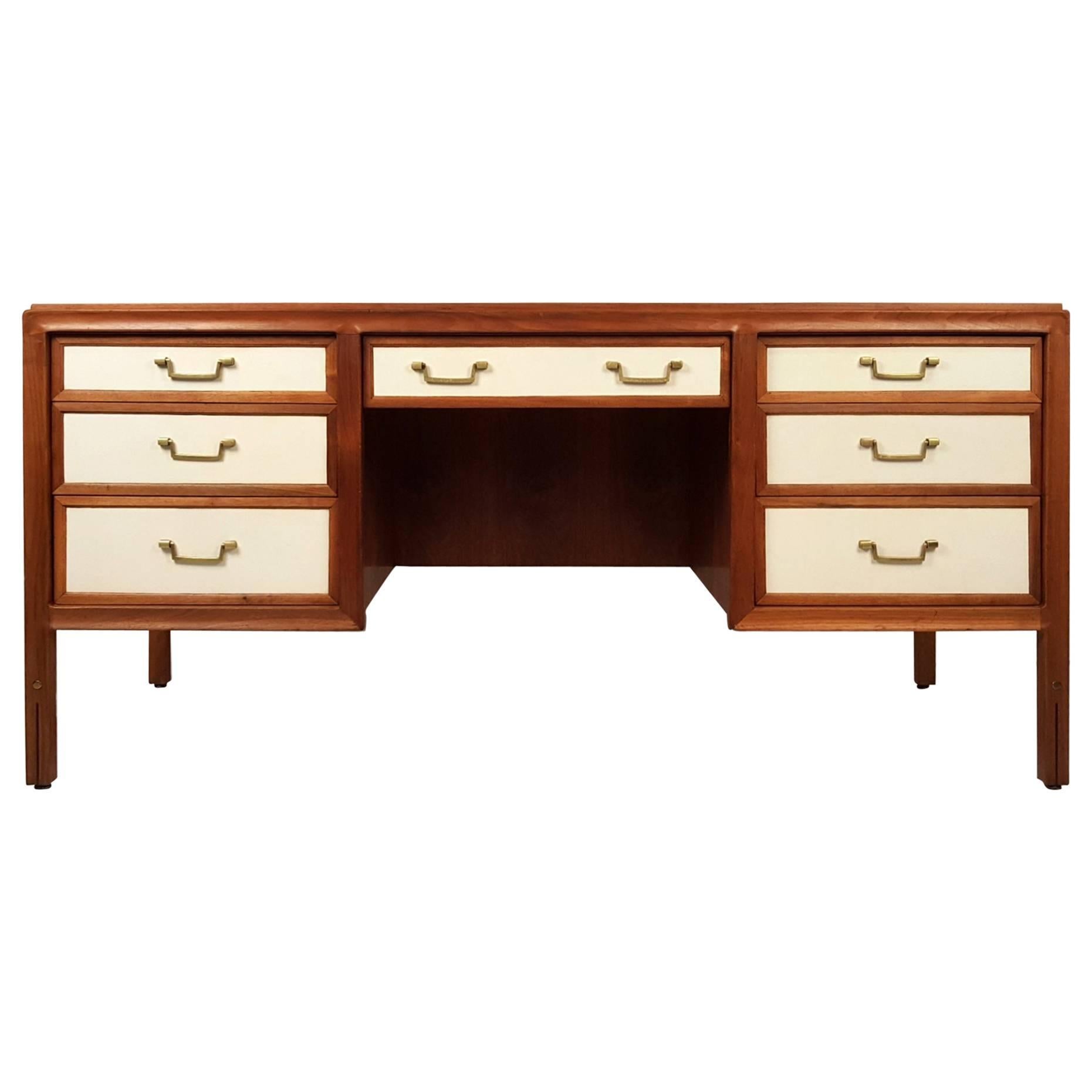Historical Context of Hickory Chair Campaign Desks

Hickory Chair, a name synonymous with American craftsmanship and enduring style, holds a significant place in the history of campaign furniture. Their contribution to this iconic style, particularly their campaign desks, reflects a blend of historical design influences and innovative manufacturing techniques that shaped the American furniture landscape for generations. This exploration delves into the rich history of Hickory Chair and its role in the evolution of the campaign desk.
Hickory Chair Company History and Campaign Desk Production
Established in 1920, Hickory Chair Company quickly established itself as a leading producer of high-quality furniture, embracing a diverse range of styles. While their catalog included various pieces, their foray into campaign desks marked a pivotal moment, showcasing their mastery of intricate joinery and meticulous detailing. Initially inspired by classic British campaign furniture designs, Hickory Chair adapted these designs to suit American tastes, incorporating both traditional and modern elements. The company’s commitment to quality and its use of superior materials, such as solid hardwoods and fine veneers, contributed to the enduring appeal of their campaign desks. Their production spanned decades, witnessing shifts in design preferences and reflecting the changing aesthetic sensibilities of each era.
Design Evolution of Hickory Chair Campaign Desks
The design evolution of Hickory Chair campaign desks is a fascinating journey mirroring broader stylistic shifts in American furniture. Early pieces often showcased a more traditional aesthetic, characterized by rich, dark finishes, intricate carvings, and a strong emphasis on functionality. Later designs incorporated more streamlined forms, reflecting the mid-century modern movement. This transition involved a shift towards lighter finishes, cleaner lines, and a focus on simplicity and elegance. The use of leather inlays and brass hardware remained consistent throughout, contributing to the distinctive character of these desks. Variations in size and configuration also emerged to cater to different needs and preferences.
Comparison with Other Prominent Furniture Makers
Hickory Chair campaign desks, while sharing common ancestry with those produced by other prominent makers like Dunhill and Baker, possessed unique characteristics. Compared to the often more ornate and heavily embellished pieces from some British manufacturers, Hickory Chair desks tended to exhibit a balance between elegance and practicality, reflecting American preferences for functionality and understated luxury. They often featured more subtly integrated details and a focus on the quality of materials and craftsmanship, rather than overwhelming ornamentation. This approach distinguished Hickory Chair’s offerings within the competitive landscape of high-end furniture.
Timeline of Hickory Chair Campaign Desk Production and Popularity
The following timeline highlights key milestones in the production and popularity of Hickory Chair campaign desks:
| Year | Milestone |
|---|---|
| 1920s-1930s | Early production of campaign desks, reflecting traditional British styles with American adaptations. Emphasis on rich dark finishes and intricate details. |
| 1940s-1950s | Increased popularity of campaign desks, with designs incorporating mid-century modern influences. Lighter finishes and simpler lines become more prevalent. |
| 1960s-1970s | Continued production, with variations in size and configuration to meet diverse needs. A wider range of wood species and finishes become available. |
| 1980s-Present | Hickory Chair campaign desks retain their collectible status. Limited edition pieces and reproductions reflect the enduring appeal of this iconic design. |
Features and Design Elements of Hickory Chair Campaign Desks

Hickory Chair campaign desks are renowned for their exquisite craftsmanship and enduring elegance. These pieces are not merely functional writing surfaces; they are statements of refined taste and a testament to the enduring quality of American furniture making. Their design seamlessly blends practicality with sophisticated aesthetics, resulting in desks that are both beautiful and highly usable.
The construction of a Hickory Chair campaign desk is a meticulous process, showcasing the brand’s commitment to superior quality. The selection of materials is paramount, with hardwoods such as cherry, mahogany, and walnut frequently employed. These woods are chosen for their strength, beauty, and ability to age gracefully. Traditional joinery techniques, passed down through generations of skilled artisans, are employed to ensure the desk’s structural integrity and longevity. Dovetail joints, mortise and tenon joints, and other time-honored methods are used to create a piece that is both robust and aesthetically pleasing.
Construction Materials and Techniques
Hickory Chair utilizes high-quality hardwoods like cherry, mahogany, and walnut, selected for their durability and rich tones. Traditional joinery methods, including dovetail and mortise and tenon joints, are employed to create strong, lasting connections. The use of hand-finishing techniques ensures a smooth, lustrous surface. Finishes are often applied in multiple layers, enhancing the wood’s natural beauty and protecting it from wear and tear. The meticulous attention to detail is evident in every aspect of the construction process.
Defining Characteristics and Stylistic Elements
Hickory Chair campaign desks are distinguished by their functionality and portability. The ingenious design allows the desk to fold compactly for easy storage and transport, a feature crucial for the traveling politicians and businessmen of the past. Classic design elements, such as elegant proportions, finely crafted details, and the use of high-quality veneers and inlays, contribute to their timeless appeal. The overall aesthetic is one of refined sophistication, reflecting the enduring elegance of traditional American furniture. The desks often incorporate subtle detailing that enhances their visual appeal and complements their functional design.
Notable Design Details
Hardware plays a significant role in the overall aesthetic of Hickory Chair campaign desks. Often, brass or bronze hardware is used, adding a touch of understated luxury. Intricate carvings or subtle embellishments on the hardware further enhance the desk’s overall appeal. Inlays, frequently made of contrasting woods or other materials, are often incorporated into the design, adding visual interest and texture. Veneers, carefully selected and applied, contribute to the desk’s rich appearance and can showcase unique wood grain patterns. These details are not merely decorative; they reflect the high level of craftsmanship that goes into each piece.
Comparison of Hickory Chair Campaign Desk Models
The following table provides a comparison of different Hickory Chair campaign desk models. Note that dimensions and features may vary slightly depending on specific customizations and the age of the piece. These are representative examples and not an exhaustive list of all models produced.
| Model | Dimensions (Approximate) | Primary Material | Notable Features |
|---|---|---|---|
| Model A | 48″ W x 30″ D x 30″ H (Open) | Cherry | Brass hardware, leather writing surface |
| Model B | 42″ W x 26″ D x 28″ H (Open) | Mahogany | Intricate inlay work, secret compartments |
| Model C | 54″ W x 36″ D x 32″ H (Open) | Walnut | Large writing surface, multiple drawers |
| Model D | 36″ W x 24″ D x 26″ H (Open) | Cherry & Mahogany | Smaller size, ideal for smaller spaces, elegant bronze hardware |
